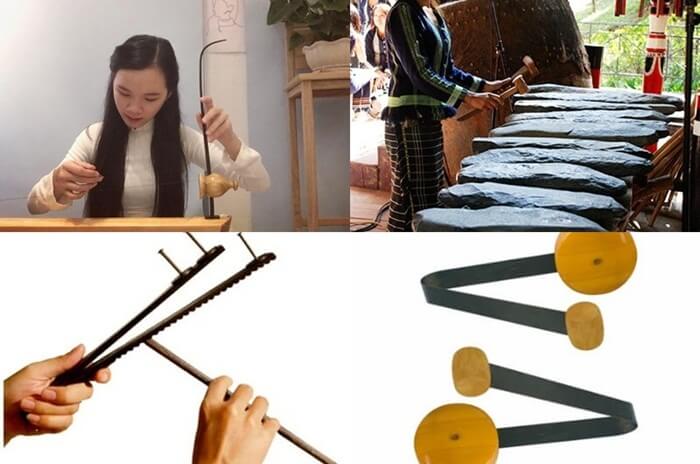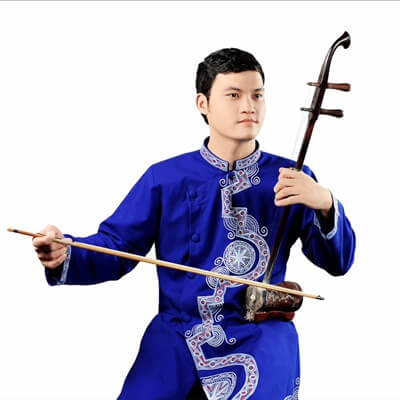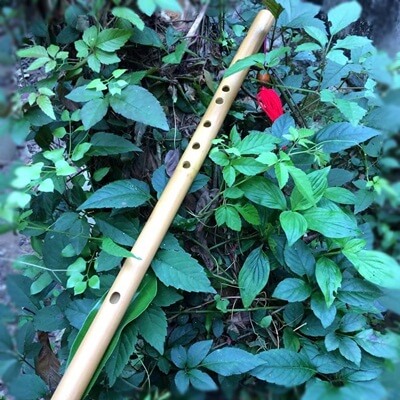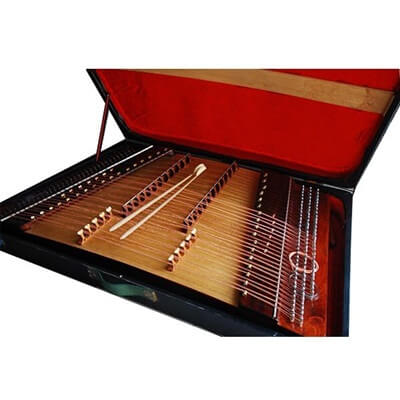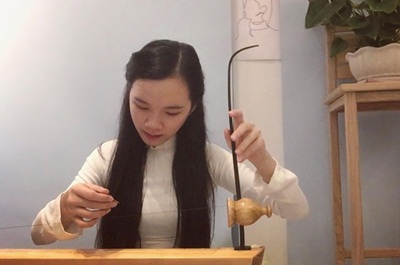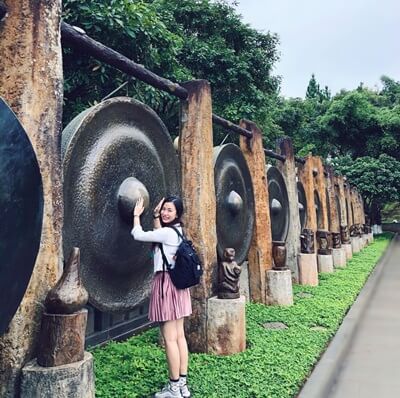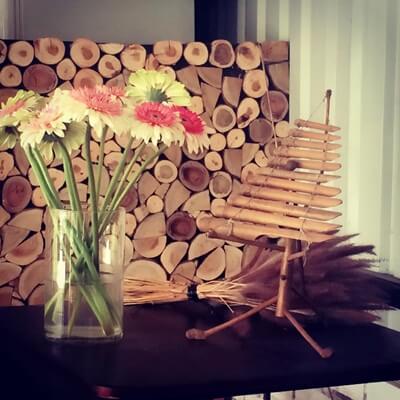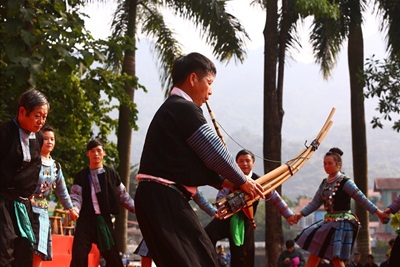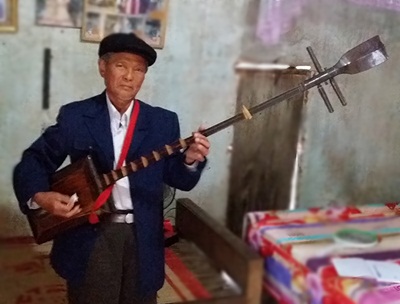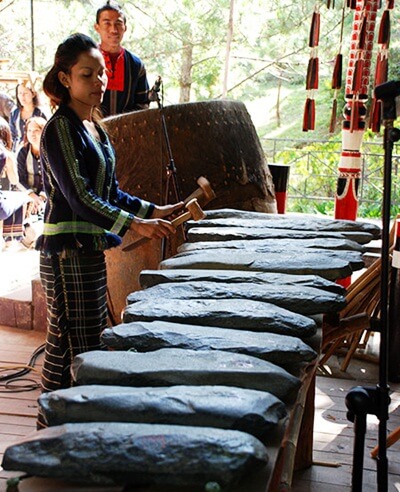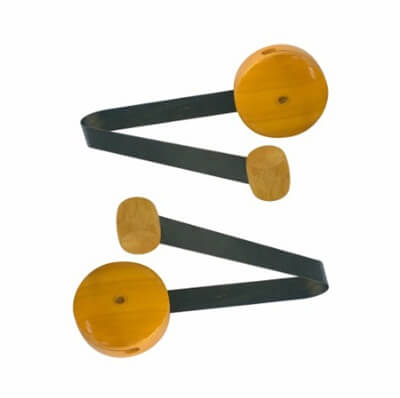Music is one of the spiritual foods in the life of the Vietnamese people. Throughout the journey of life and the length of history, today, Vietnam still preserves many musical instruments of various kinds, from the simplest forms to the highly developed ones with sophisticated performing techniques.
Distinct musical melodies from the North to the South of Vietnam create an unmistakable identity for each region. This feature leads to the creation of musical instruments with local characteristics.
In addition, there are musical instruments that have been imported but have been nationalized and localized to suit the Vietnamese musical aesthetic.
Here are the popular traditional Vietnamese musical instruments.
Dan Co (flock of storks, two-string instrument)
Dan Co or Dan Nhi has five parts: the neck, the body, the head, the bridge, and the strings. Dan Co has a wide range of two octaves, and the sound is clear and soft, close to the high voice (needle voice).
Dan Co plays a key role in Hat Xam (traditional music in North Vietnam), being a member of the Bat Am, the Nha Nhac Orchestra, the Chau Van Band, the amateur band, and the General Orchestra in Vietnam.
Bamboo flute
From ancient times to the present, the bamboo flute has been associated with Vietnamese cultural and spiritual life. The bamboo flute can be played solo or in chord form and can also be combined with traditional orchestra, symphony, light music, or chamber music.
The material used to make this musical instrument is a bamboo pipe with a diameter of about 1.5cm and a length of 30cm. The pipe’s body is cut with a keyhole and 6 or 10 musical holes. The bamboo flute can express many nuances of emotions with a range of over two octaves.
The zither
The Vietnamese zither (Tam Thap Luc) originated from the Persian country of Santur, was made in the 12th century, and was introduced to Southeast Asia in the 18th century. The zither plays an important role in orchestras for the Cheo and Cai Luong stages, and it can be used as an accompaniment for singing, solo, and in the general traditional orchestra.
The guitar’s trapezoidal top is made of light and spongy wood, and the bridge is made of solid wood. The left neck has 36 hooks for stringing, and the right neck has 36 shafts for tuning. The strings are made of metal, and the rods are made of two thin bamboo sticks. The zither’s vocal range is quite wide, about 4 octaves.
Monochord
In traditional Vietnamese orchestras, Dan Bau or Doc Huyen Cam (Monochord) is regular. There are two types of monochord: bamboo body and wooden box.
The instrument has only one string running through the body. The string was made of silk, later replaced by iron strings. The necks were made of bamboo in the past, but they are now often replaced by buffalo horns.
Gourds are made of dried gourd shells or lathe wood. The winding shaft is made of bamboo or wood and placed close to the player’s side. The plectrum, which has one sharp side, is usually sharpened by bamboo, coconut body, or softwood.
Gongs
Gongs are present in almost all ethnic groups in Vietnam, dating back to the Dong Son brass culture, from 1,000 BC to 100 AD. They are associated with the Central Highlands and are indispensable in every person’s spiritual life.
The gong music of Central Highlands Vietnam is an artistic value that has been affirmed in social and cultural life. The gongs are cast in copper alloy mixed with tin and lead. The one with the knob is called Cong, and the one without the knob is called Chieng. The bigger the gong is, the deeper the sound is; the smaller the gong, the higher the sound.
T’rung Instrument
T’rung is a popular percussion instrument in Central Highlands Vietnam. It is made of several bamboo tubes of different sizes.
With the normal one, T’rung has only 5-7 tubes cut and shortened to different lengths. A professional T’Rung has about 12-16 pipes lined up on the rack. Knocking on the pipes with an awl creates a different high and low sound depending on the loudness, small, long, and short of the tube.
Large and long tubes produce bass, while small and short tubes have high tones. The T’rung’s timbre is opaque; the sound is not loud and resonant, but it is pretty special.
Khen
Khen is both a musical instrument and a tool, as well as a means of connecting the community and sharing feelings. It also helps cultural subjects sublimate with an optimistic spirit of love for life.
Khen belongs to the breath instrument set, which has a rather complicated structure consisting of many tubes arranged side by side. One side goes through the banana-shaped gourd to make a resonance box.
Khen has a thin and crisp timbre, with each tube emitting a certain timbre. The inside of the tube has a reed made of thin copper or silver. Khen is a multi-vocal instrument with a wide range of about 1.5 octaves and a long sound.
Dan Day (Bottom flock)
Dan Day is also a unique traditional Vietnamese instrument in shape and sound. It can be combined with other musical instruments, such as beats and drums, to create the famous form of Ca Tru Singing.
Dan Day has 3 strings, a very long handle, and a large hole in the back of the soundbox. It has four main parts: the body, the neck, the head, and the strings. Dan Day has a range of more than 2 octaves, a warm and sweet timbre, and the ability to express deep emotions.
Dan Da (Rock Instrument)
Dan Da is the oldest percussion instrument in Vietnam and one of the oldest musical instruments of humankind.
Dan Da is made of stone bars with different lengths, thicknesses, and thins. The long, big, and thick rock bars have a low-pitched sound, while the short, small, and thin rock bars have a soft sound.
The inanimate stone slabs that are made into musical instruments are magical. From these stones, the great voice of the Central Highlands still echoes.
Song Loan
Song Loan, also known as song lang or song lan, is a symbol in cai luong orchestras. It plays a vital role in keeping the rhythm of other instruments in the orchestra.
All musicians must follow the song lang signal and keep the rhythm track according to the conductor who holds the song lang. The signal tells the end of a melody. The sound of Song Loan is crisp, with the high pitch and expansive sound resonating far away.
Senh Tien Instrument
Sanh Tien is a unique percussion instrument that has appeared in Vietnam for at least a few hundred years.
Senh Tien is made of three wooden pieces. One of them has iron nails, which hold a few iron coins. When the wooden pieces are shaken, the coins and the wooden pieces create sounds.
Senh Tien appears in royal court orchestras, Cau Van, Hue folk songs, Sac Bua, Hat A Dao… People use it to harmonize, keep rhythm, or make dance props.
Studying traditional instruments and enjoying different types of Vietnamese music is also an exciting activity to do in Vietnam.
You can see these instruments in most regions along the country, from Northwest Vietnam to the Mekong Delta.
Typically, Khen and bamboo flutes appear a lot in mountainous areas. You can find Senh Tien – Song Loan in Hue City when you see folk songs on the Perfume River at night. Also, T’rung and Dan Da (stone instruments) are present in Central Highlands, Vietnam. The zither and monochord often come with Don Ca Tai Tu in the Mekong Delta.

